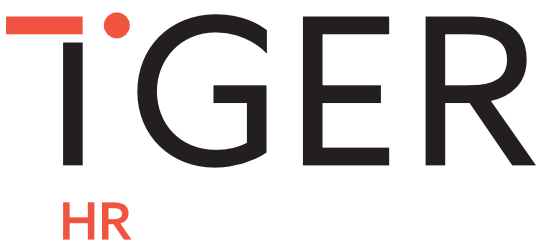Table of Contents
Given the massive transition COVID-19 triggered in businesses around the world, it’s no surprise that almost all existing rules were thrown out the window overnight. Since March 2020, companies have navigated through extreme uncertainty and adapted the best they can. To make sense of this new normal, we’ve put together the following comprehensive guide to help employers navigate the world of work post-pandemic.
The state of play
When the coronavirus outbreak first reached the UK in 2020, no one could have predicted the situation we’ve since experienced. Some of our clients adapted quickly, with a complete transition to remote working within days of the announcement, setting up home offices with monitors, office furniture and Wi-Fi boosters, as well as remote working platforms to facilitate their workers at home. They also prioritised internal communications with daily updates, while social gatherings moved virtually. Employee benefits also adapted, with additional flexible working arrangements offered to those struggling with childcare and subscriptions to apps offered, to help with meditation, fitness and nutrition.
At the time, our MD, Rebecca Siciliano, held a webinar for businesses looking for guidance on remote working in a changing landscape. She revealed how Tiger transitioned to remote working, explained some of the ways organisations could connect to their teams, and the impact COVID-19 had on recruitment activity to that point.
Now that restrictions are beginning to ease in many parts of the world, businesses and their workers are returning to a world of work that has changed irrevocably. Lockdowns and social distancing mandates forced employers and employees to adapt to a very different way of working. With life returning to normal but many workers resistant to the idea of returning to the office full-time, what can employers expect to face when trying to get their business back on track post-pandemic?
The future of work post-COVID-19
In June 2020, we invited three experts on work: Bruce Daisley, host of the Eat Sleep Work Repeat podcast; Dr Heejung Chung from the University of Kent; and CIPD Director David D’Souza, to discuss business’ reactions to the pandemic, as well their predictions for the future of work post-COVID-19. Watch the webinar in full below.
Throughout the session, they covered:
- The post-COVID-19 office
- The future of flexible working practices
- How the HR community has responded to COVID-19
- The importance of employees’ mental and emotional wellbeing
- The impact of working from home on employees, employers and businesses
- The potential impact of COVID-19 on office culture
- The disparity of remote working options offered to male and female employees
- Qualities employees need to adapt to the changing workplace
- Their predictions for the next five years
Hybrid working and flexible hours
While the idea of flexible working has been around for many years with proven benefits to employee engagement, a new era of ‘hybrid working’ is emerging now that employers are encouraging staff to return to the office. There are many perceived benefits of employees working on-site, including increased collaboration and productivity, and there have been recent concerns that those working from home tend to clock more unpaid overtime hours than those on-site.
However, businesses will likely have their work cut out for them as a whopping 74% of professionals expect working from home to become standard practice, and 97% have expressed that they simply do not want to return to the office 5 days a week. Employees have come to attribute flexible hybrid models to a better work/life balance and overall improved well-being, particularly for working parents.
The reality is that the desire for flexible hours and a balance of days working from home is shattering any hopes of returning to the traditional working week. Soon, trend-setting companies will begin to make headlines with their new trail-blazing hybrid working models. For example, in late August 2021, Canva revealed that following some internal research, they are committing to a flexible working model that requires their employees to visit the office a mere 8 times a year.
Flexibility across the board will undoubtedly become a major employee benefit, perhaps even an expectation, and businesses should consider this if they wish to attract, engage and retain their workforce in the coming years.
The future of hiring
While it’s impossible to know how long coronavirus restrictions will affect the way we work, it’s almost a certainty that companies will have to adapt the way they’ve previously hired new staff. Eventually, businesses may be able to return to in-person recruitment, however, it’s likely this will coexist alongside some degree of remote hiring.

Hiring and onboarding remotely
For employers, hiring and onboarding remotely may have seemed like a foreign concept before the pandemic. However, like so many new ways of working, it has become commonplace. For some, this process may now be their default, whereas others are learning to hire remotely alongside their existing practices.
Remote recruitment is a completely different experience from in-person hiring. For example, interviews are conducted over the phone and/or video call, which means body language and other subtle cues are taken away from the experience. Getting a ‘feel’ for someone from a handshake or the way they hold themselves in person may be non-existent.
Some companies may have already experienced onboarding remotely for the first time, and will understand it can be an involved process. For example, whoever is leading the onboarding process will have to be prepared to facilitate regular video calls, organise software to be set up and send physical equipment to the new starter’s house.
Alongside these logistics, there is likely to be a level of uncertainty for the new starter due to the pandemic. They may also feel disconnected from their team and unsure of who they should direct questions to. Companies should anticipate their concerns and put in place many opportunities for the employees to form connections, as well as provide clear communication on who they can turn to for help.
To ensure longevity in an onboarded hire, support from the business is integral. This, as well as experiencing the company’s values and culture, will ensure they settle in and will be ready to take on their exciting new role.
Will we all be working a four-day week?
Similarly, the concept of a four-day week is nothing new, with companies in Japan, New Zealand, Iceland and Denmark having all trialled various versions of a shorter working week in recent years.
Positive feedback led us to believe that the trend would likely continue until the pandemic hit and forced most people into remote working. With things back on track, the lure of a shorter week has returned. It could be that employers are more open to change now that the pandemic has proved that businesses and staff can adapt well to new working structures, or that employees are gaining confidence to seek working patterns that will promote a better work/life balance post-pandemic.
The idea of a four-day week is unsurprisingly a hit with employees, and businesses will certainly enjoy the benefits of engaged and loyal staff as well as more practical things like reduced power bills. However, there are still some important aspects for employers to take into consideration. Would there be extra costs involved to employ extra staff to offset reduced hours? Would they keep the standard 37.5 hour week or increase it to four 10-hour days? Would they need to invest in technology/software to accommodate this new working model? Would productivity and profit take a hit?
To offset some of these considerations, there have been mostly promising statistics around productivity, reduced stress levels and generally improved employee wellbeing that are driving this new idea forward. In 2019, Microsoft tested a 4-day working week in Japan with great success, leading to a 40% increase in productivity and an employee approval rate of over 90%. In March 2021, Spain announced plans to pilot a 32 hour work week and Scotland unveiled plans in August to trial a four-day week without loss of compensation.
Leadership post-pandemic
Everything about leadership has changed over the past six months. While the transition first shifted to crisis mode, then to a new version of normal, leaders have found their ability to adapt a crucial skill for guiding their teams. What may have been a formal relationship between managers and their employees in the past, has now developed into a more vulnerable, human connection. As we video call into each other’s homes and see members of each other’s families, a leader’s ‘work’ and ‘home’ faces have become one.
To help leaders navigate the coming months, we asked experts Elke Edwards from Ivy House and Nora Grasselli from ESMT Berlin to reveal their insights into how leadership will change. They cover tips on keeping staff engaged, bringing humanity into leadership, teaching employees resilience and offering practical solutions to effective management. Watch the webinar in full below:
Motivating and fostering collaboration within remote teams
For business leaders, one of the steeper learning curves throughout this period would have been the switch to managing teams remotely. One of the top employer concerns relates to their teams not being as productive when working from home. Therefore, motivating remote teams is something many businesses have learned to do by trial and error. Below are some best-practice tips if you’re looking to increase productivity in your remote team:
- Setting expectations
- Increase communications
- Care about your employees’ personal lives
- Instil trust
- Facilitate team learning
- Focus on what’s certain
- Incorporate opportunities to socialise
As the pandemic continues, it’s important to remember you’re also going through the same personal stresses as those you’re leading. In order to manage a virtual team that can collaborate and work together effectively, be open with your own personal anxieties and let your team know your boundaries.
Stay in touch with employees’ mental health
If we continue to work remotely in some capacity, monitoring mental health will be an essential part of the future of work. While an employee’s mental health should always be a top priority, the signals a team member isn’t coping can be hard to read via phone or video call.
While the pandemic has been extremely stressful for everyone, some employees may need extra support. If you’re looking to not only monitor, but improve your employee’s mental health remotely, ensure you act proactively. Firstly, check in with yourself – it’s impossible for you to help others if you’re unable to help yourself. Keep up well-being and social check-ins with employees and facilitate social catch-ups. The signs something might be wrong could include:
- Becoming quieter or more reserved during calls
- A lack of productivity
- Existing triggers of mental ill-health
- Changes to how somebody usually is
- Appetite changes
- Sleeping disruptions
- Planning to do something out of character
Keep in mind, that it is difficult to know what’s going on with someone at the best of times, so continuous check-ins are vital to ensuring every member of your team feels supported.





